#Derceto
Explore tagged Tumblr posts
Text




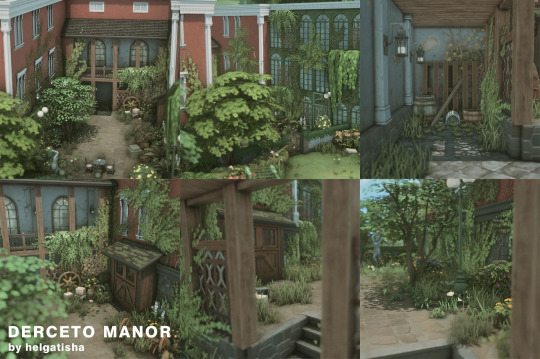

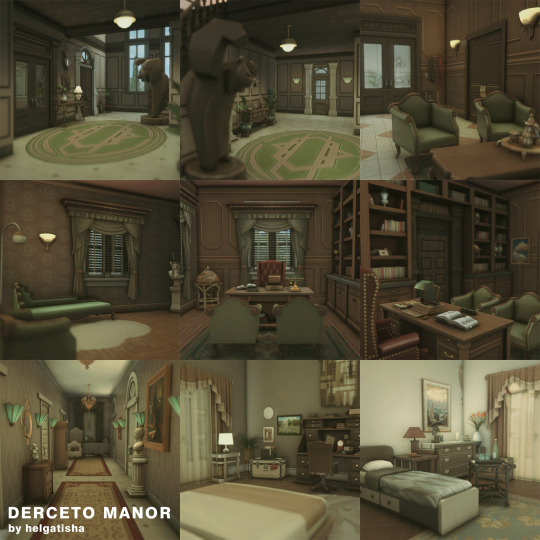
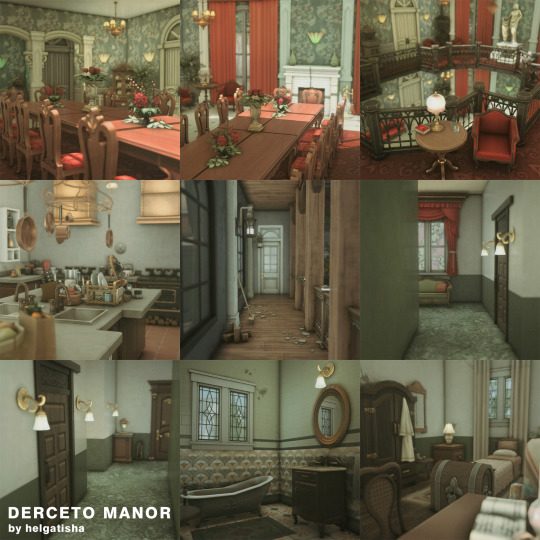

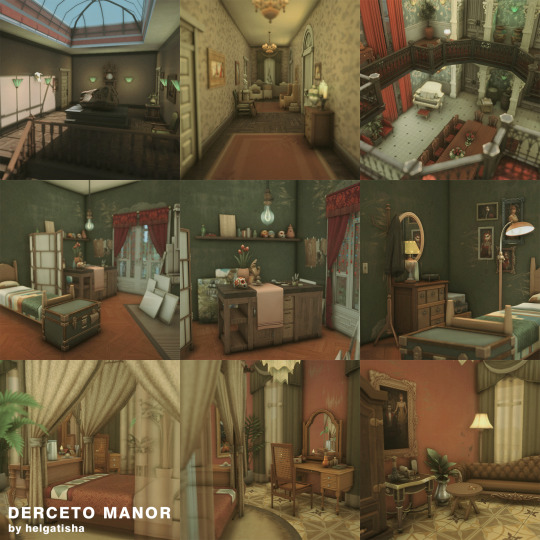
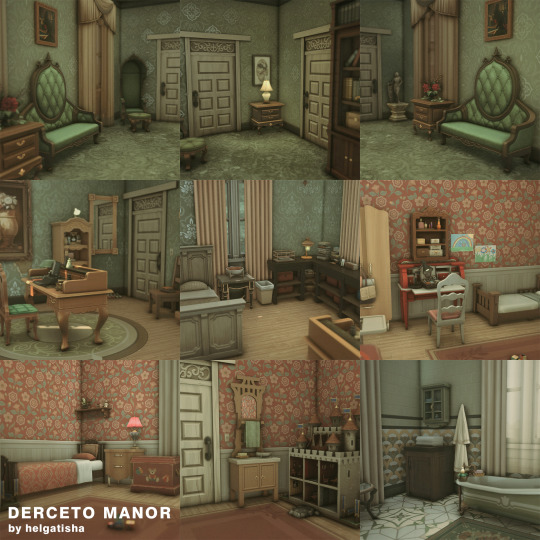

DERCETO MANOR
Download: simfileshare | patreon | boosty
Inspired by Alone in the dark
ID helgatishagame
50x50
8 bedrooms | 6 bathrooms
No CC
Willow Creek
Use bb.moveobjects
Tools mod is used
▶ add the files to your “Tray” folder
please read and respect my tou
Linktree
gshade preset
#helgatisha#sims 4#ts4 build#sims 4 manor#sims 4 build#ts4 willow creek#ts4 new orleans#ts4 alone in the dark#derceto#sims 4 family home#ts4 conservatory#ts4 building#mycc download
4K notes
·
View notes
Text

109 notes
·
View notes
Text
“I,” said a voice—“I am Desire. In Greece I am revered, and there I am Aphrodite. In Italy I am Venus; in Egypt, Hathor; in Armenia, Anaitis; in Persia, Anâhita; Tanit in Carthage; Baaltis in Byblus; Derceto in Ascalon; Atargatis in Hierapolis; Bilet in Babylon; Ashtaroth to the Sidonians; and Aschera in the glades of Judæa. And everywhere I am worshipped, and everywhere I am Love. I bring joy and torture, delight and pain. I appease and appal. It is I that create and undo. It is I that make heaven and people hell. I am the mistress of the world. Without me time would cease to be. I am the germ of stars, the essence of things. I am all that is, will be, and has been, and my robe no mortal has raised. I breathe, and nations are; in my parturitions are planets; my home is space. My lips are blissfuller than any bloom of bliss; my arms the opening gates of life. The Infinite is mine. Mary, come with me, and you shall measure it.”
--Edgar Saltus, "Mary Magdalen"
#aphrodite#venus#hathor#anaitis#anahita#tanit#baaltis#derceto#atargatis#bilet#ashtaroth#asherah#universal#love#stars#world#eternal#space#life#infinite
274 notes
·
View notes
Text





"That doesn't look safe."
#alone in the dark#aitd#derceto#emily hartwood#pieces interactive#virtual photography#video game scenery
36 notes
·
View notes
Text
youtube
EMILY ALONE IN THE DARK GRACE JOKE - ENIGMA MEDICINALI E CALDAIA 🎮PS5 UHD 60f
#aloneinthedark#EmilyHartwood#Derceto#enigmamedicinali#enigmacaldaia#Jeremy#capitolo2#parte4#walkthrough#gameplay#letsplay 🎮#ps5#ps5share#pcgames#xbox#youtubegaming#yuotubegamingchannel#PS5Share#ShareFactoryStudio#Alone in the Dark#ALONEINTHEDARK#LET'S_PLAY#PS5#PlayStation 5#ITA#Alone in the dark#Live#streaming#PS54k#4k uhd
0 notes
Text
Cosmas Megalommatis, Atargatis (or Derceto): World Mythology, Greek Pedagogical Encyclopedia, 1989
Κοσμάς Μεγαλομμάτης, Αταργάτη (ή Δερκετώ): Παγκόσμια Μυθολογία, Ελληνική Εκπαιδευτική Εγκυκλοπαίδεια, 1989
Кузьма Мегаломматис, Атаргатис (или Деркето): мировая мифология, Греческая педагогическая энциклопедия, 1989
Kosmas Megalommatis, Atargatis (oder Dea Syria): Weltmythologie, Griechische Pädagogische Enzyklopädie, 1989
Kosmas Gözübüyükoğlu, Atargatis: Dünya Mitolojisi, Yunan Pedagoji Ansiklopedisi, 1989
قزمان ميغالوماتيس، آتارگاتیس : اساطیر جهانی، دایره المعارف آموزشی یونانی، 1989
Côme Megalommatis, Atargatis (ou Dercéto): Mythologie mondiale, Encyclopédie pédagogique grecque, 1989
1989 قزمان ميغالوماتيس، أترعتا : الأساطير العالمية، الموسوعة ال��ربوية اليونانية،
Cosimo Megalommatis, Atargatide (o Atergate): mitologia mondiale, Enciclopedia pedagogica greca, 1989
Cosimo Megalommatis, Atargatis (o Derceto): mitología mundial, Enciclopedia pedagógica griega, 1989
Cosmas Megalommatis, Atargatis (or Derceto): World Mythology, Greek Pedagogical Encyclopedia, 1989
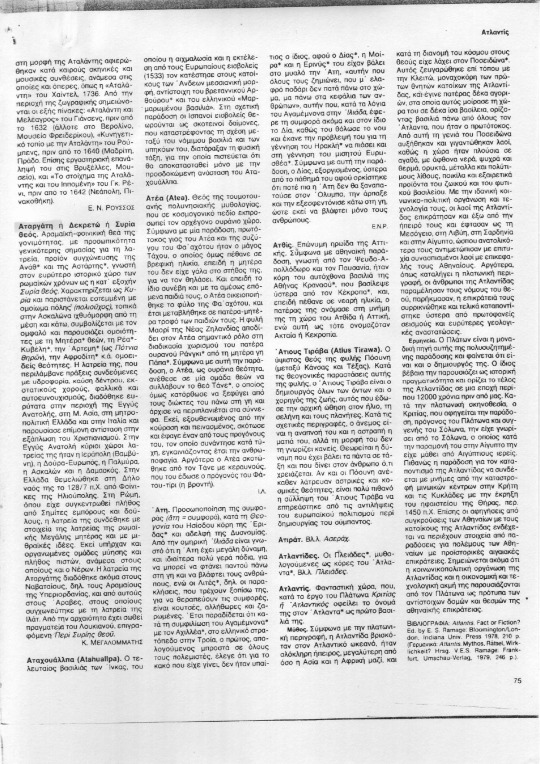
---------------------
Скачать PDF-файл: / PDF-Datei herunterladen: / Télécharger le fichier PDF : / PDF dosyasını indirin: / :PDF قم بتنزيل ملف / Download PDF file: / : یک فایل دانلود کنید / Κατεβάστε το PDF:
#Αταργάτη#Σύρια Θεά#Δερκετώ#αραμαϊκή θρησκεία#Μανμπίτζ#Ιέραβλος#Τζέραμπλους#Ύστερη Αρχαιότητα#μυστικισμός#θρησκευτικός συγκρητισμός#Atargatis#Derceto
0 notes
Text

25 notes
·
View notes
Text
¡Sorpresas emocionantes! Alone in the Dark revela su nuevo gameplay
Adéntrate en un Mundo Aterrador de Pesadillas y Secretos Oscuros Introducción: En una emocionante revelación, Alone in the Dark nos ofrece un vistazo a su nuevo juego aterrador. llega el avance “Buscando a Jeremy” el 8 de noviembre de 2023. En este tráiler, verás escenas de juego inéditas que te mantendrán en vilo, enfrentando aterrorizantes enemigos y explorando entornos misteriosos. Cuerpo:…
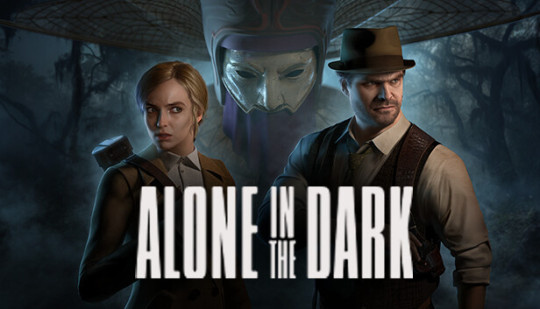
View On WordPress
#Alone in the Dark#doom jazz#Edward Carnby#Emily Hartwood#horror psicológico#juego de terror#Mansión Derceto#Mikael Hedberg#Pieces Interactive#supervivencia
2 notes
·
View notes
Text
The Intersection of Gaming and Music in Alone in the Dark
Alone in the Dark, a classic survival horror game, is making a comeback in 2024. Developed by Pieces Interactive and published by THQ Nordic, this reimagining pays homage to the ground-breaking original while introducing fresh elements. As we delve into the eerie corridors of Derceto Manor, let’s explore how music plays a crucial role in enhancing the game’s atmosphere and storytelling. The Four…

View On WordPress
#alone in the dark#Árni Bergur Zoëga#cosmic horror#derceto manor#doom jazz#edward carnby#emily hartwood#film noir#games#gaming#h.p. lovecraft#horror#music#news#playstation#playstation 5#psychological horror#reviews#series x#soundtrack#steam#survival horror#thq nordic#video-games#windows pc#xbox
1 note
·
View note
Text






Patricia
outfit by @lin-dian hair by @thekunstwollen eyes by @angissi lips by @remussirion skin overlay by @sims3melancholic
An incredibly building Derceto Manor by @helgatisha Gshade preset by @helgatisha Thanks to all creators! ♡





#the sims#ts4 character#ts4#thesims4#симс 4#sims 4#simblr#screenshot#sims 4 gameplay#симс#ts4 gameplay#симс 4 персонаж#sims4#sims 4 cc#ts4 lookbook#sims4 lookbook#ts4 cc#sims 4 screenshots#gshade preset#sims 4 no cc build
418 notes
·
View notes
Text

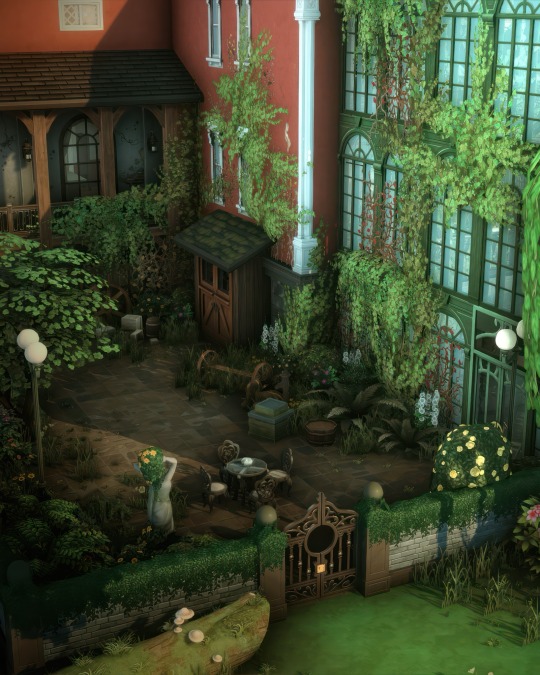
DERCETO MANOR by @helgatisha ✨
(new cottagecore gshade preset used)
757 notes
·
View notes
Text

355 notes
·
View notes
Text



YEAR OF THE SNAKE 2025
19 notes
·
View notes
Note
Folklore ask! Any stories on how the Greek mermaids got to be named after gorgons instead of any other countless sea or water spirits in myth? Does it have to do with princess Thessalonike?
I think this is actually a very complex story involving literature, oral tradition, the perception of creatures, women, historical figures and the meaning we apply to symbols according to our circumstances. This is a long story so there is going to be a Read More cut below.
First of all, Modern Greek has two words for the mermaid; γοργόνα (ghorghóna) and σειρήνα (sirína), so as you see both gorgons and sirens were conflated with the image of the mermaids at some point. In fact, the sirens did that first. I write "ghorghóna" in Latin characters to stress the change of the pronunciation of γ to a voiced velar fricative ever since late antiquity but otherwise the word is the exact same.)
Ancient Greek Mythology did not have a mermaid creature in the way we imagine it since the Middle Ages but the Ancient Greeks were aware of an ancient Assyrian deity who was imagined like that. This was goddess Atargatis who was known in Greek as Derceto. Greeks identified Atargatis / Derceto as the same with a mermaid goddess worshipped in Askhelon, somewhere in the north of modern-day Syria, according to Diodorus (1st century BC) but also Ctesias (5th century BC). The Roman Lucian confirmed this perception in the 2nd century AD. It is believed that to some degree this worship was known to Greece, especially during and after the Hellenistic period. For example, there has been a scripture found in Pella, Macedonia (<- coincidence?) dating to 206 AD in which the veneration of an Assyrian water deity is described.
The early Sirens of the Greek mythology (since 7th century BC) were depicted as creatures with the bodies of birds and the faces of women, who would seduce sailors with their beautiful music and singing. However, from the Classic period onwards there is scarce art depicting them with a fish body instead, maybe due to an Assyrian influence or maybe because the Sirens were creatures associated with the water mostly. They lived at the shore waiting for ships to pass and they were children either of River God Achelous or the Titan Oceanus or of Phorcys, son of Pontus (Sea).
A critical moment for the establishment of the siren as a mermaid in European minds might have been the book Physiologicus, written in Greek around the 2nd century in Alexandria. The book was a predecessor of bestiaries and was connecting various beasts (mostly actual animals but also a few mythological creatures) with the Christian doctrine by associating them with some trademark moral qualities they supposedly had. Physiologicus became very impactful and was translated to Latin, Armenian, Ethiopic, Syriac and later to Slavic, Old German and other European languages. I wasn't able to find what exactly was said about the Siren in the original Physiologicus, however the 10th century German copy Bern Physiologicus described the siren as half-woman, half-fish. Also, from the 7th century onwards western European books assert that the sirens are "sea girls" and are described as "having scaly fish tails". I did find a tiny image of a Greek manuscript of the Physiologicus and it has this drawing of the sirens, who indeed look a lot more like merpeople than half-birds:

Again, Physiologicus was very influential and the rest of the Early Christian tradition also explored the theme of the sirens extensively through the lens of morality. Early Christian documents discourage people to believe in the literal existence of sirens (fair enough) but they also shape their meaning into an allegory for prostitutes or any vile lustful women who are a danger for the moral male. In this context, the fish form gains more and more ground as well as alternative imaginings of the sirens as half-snakes or half-dragons. It should be noted that there are even imaginings in which the Siren has simultaneously fish and bird traits. The scaly look though, the picture of the siren ascending from the dark abyss instead of a feathery flying singer was more effective for the description of a destructive, dangerous feminine being. It is in the Byzantine period and respectively in the Middle Ages in West Europe when mermaids really become popular. In spite of all that, the bird version was not obsolete. The 10th century Byzantine encyclopedia Suda describes the sirens as half-birds.

Pages from Suda.
Let's go to the Gorgons now. The Gorgons were daughters of Phorcys, son of Pontus (Sea), much like the Sirens according to one version of their myth. They are too part of the general sea mythological sphere. They lived either beyond the edges or in Oceanus, in a hardly accessible rocky island. Their bodies were imagined as centaurs or wasps as early as in the 8th - 7th centuries BC but after that point they were imagined as humanoid, however sometimes they have snakes in their waist too or a scaly appearance or even wings, like we see happening with Sirens. All original accounts agree to a terrible old-looking repuslive face crowned with snakes. So does their name; Γοργώ (Gorgó) means "terrible looking, fearsome, terrifying". Despite that and before Ovid's popularisation of the Roman version of a victimized Medusa, the Greek Pindar already described Medusa as an incredibly beautiful woman in the 5th century BC. Pindar's take was influential and after this point ancient Greek art depicts a fairer Medusa. One can argue that Medusa typically looks scary but beautiful in pop culture ever since. In other words, as time passed there was some convergence in the way Gorgons and Sirens were imagined; the duality of being beautiful yet terrible and vile, sea creatures, feminine attributes, eventually a scaly look.
Let's make a pause now to talk a bit about Thessalonike and her tragic story. Thessalonike was Alexander the Great's half-sister, so named by her father Philip after an (undefined) victory against the Thessalians. Her mother Nicesipolis died when she was a baby and Philip died when she was a child so she was raised by Olympias. I would like to stress that there was a signficant age gap between Thessalonike and Alexander and there should not have been a lot of interaction between them. After Alexander's death, Olympias had still not married Thessalonike to anyone, favouring her own daughter first. Cassander, one of the diadochi, killed Olympias and Alexander's son and successor and married Thessalonike probably forcefully in order to get a better claim for becoming the King of Macedon. Cassander then named a new city he founded on the site of Ancient Therma after his wife. Thessalonike seemed to have influence over her three sons, especially after Cassander died, however when the first born Philip died, the second son Antipater murdered his mother, most likely because she favoured her third son Alexander to at least share the throne with Antipater while she was also serving as regent. I mostly wrote all this to make a point that the last person who was impactful in Thessalonike's life was Alexander the Great.
Around 338 AD there was an Alexander Romance attributed to Pseudo-Callisthenes. This book was supposedly recounting the life and adventures of Alexander the Great, however it was highly fantastical and inaccurate and became what you would call a liberal historical novel of sorts. This is where the origins of the legend of Thessalonike were. (What if there is some connection to the surviving veneration of the Assyrian mermaid goddess in Macedonia, just a century earlier?) Alexander Romance was a huge success getting translating into 25 languages in pre-modern times and reaching as far as Malaysia and Mali. This is certainly what greatly assisted Alexander to become a legend and hero even amongst foreign nations, gaining even their own local national traits. The original Greek version was so loved amongst the Byzantine Greeks that it got multiple revised editions, including some in which it was recasted in poetic Medieval Greek vernacular. It was one of these copies that the Latin diplomat Leo the Archpriest found in Constantinople in the 10th century and translated it into Latin, which made the Romance very popular in the west too.
Okay, we talked about the duality that the sirens and the gorgons had attained at this point as well as the survival of the interest around them due to the Christian theology. In Byzantine Greek the meaning of the word gorgo (terrible, fearsome) was still fully understood. In fact, in Byzantine Greek there was the word γοργόνη (ghorghóni) which addressed a horrible woman. It is also reported in the local dialect of Amorgos island. It is thus most likely that the shift of Thessalonike as "a gorgon therefore a mermaid" happened at that time and perhaps especially in the copies in the Medieval Greek vernacular and it was due to all this mix of influences.
You see, Thessalonike is not described as just any mermaid or even just like a plain man-eating siren. She appears to have two forms or two personalities in her. She swims in the seas waiting to find a ship and ask the sailors whether Alexander is still alive. In this state she is beautiful and calm and pleasant in her manners, which resembles the romantic view of a mermaid or the initial seductive state of a siren. If the sailors confirm that Alexander lives and rules and conquers the world, she remains this way and sends good winds to help the ship travel to its destination quickly and safely. But when the unsuspecting sailors say "But, Lady, Alexander died long ago!" then she changes and becomes what the Byzantine Greeks would call "ghorghóni". Her power is way more immense than to just grab a dude and eat him. She becomes huge and terrible and with the power of her tail she causes enormous storm waves which break and sink the ship and kill all the sailors. For this reason she was probably engraved in people's perception as a terrible Gorgon.

Here's the thing though: γοργώ (ghorghó) sounds an awful lot like another Greek word, γρήγορος (ghríghoros) which means "quick, fast". Those two are both ancient but etymologically unrelated. The fall of the Byzantine Empire and the annexation of the Greek lands by the Ottomans led to significant changes for the worse in the number of Greek people who had easy access to education and particularly education in relation to their heritage beyond this of the religion. Only select few that kept their riches or Greeks who then fled to the west had easy access to these things. In short, with more limited access to older forms of Greek or old Greek literature eventually γοργός (ghorghós) changed into a variant of γρήγορος (ghríghoros) = fast and its actual meaning of fearsome, terrible was forgotten. In these circumstances, the word γοργόνα (ghorghóna) which was used to address Thessalonike was now perhaps perceived as meaning something in the likes of "swift, agile and lithe" and it became associated with the positive mermaid form of hers. Eventually, the word γοργόνα was established as a generic term for the mermaid just like σειρήνα.
This happened because the legend of Thessalonike as a mermaid as well as the entirety of the Alexander Romance remained popular in the Ottoman period. The Byzantine copies were still circulating in the Greek population and in 1680 a Modern Greek version was printed with the name Φυλλάδα του Μεγαλέξανδρου (loosely translated to "Papers about Alexander the Great"). The book was written in the colloquial Demotic vernacular and it could be read by everyone (who knew how to read). This is how these stories spread and became oral tradition and folk tales. The romantisation of Alexander's character and by extension Alexander himself became a point of reference for their historical origins for both the Byzantine and the Modern Greeks.

The modern book from 1680 (yeah that's modern)
The true reason Thessalonike's legend remained so popular was not due to Thessalonike herself. Thessalonike was a minor historical figure for the most part and her interaction with Alexander was minimal. Some historians believe it was her son Alexander she was grieving for in the original legend but then he was confused with his much more famous uncle. I downright disagree. I believe the reason Pseudo-Callisthenes or the unknown authors and / or all these revisions imagined Thessalonike as the one grieving and wreaking havoc for Alexander was because of her being the name-giver to the city of Thessaloniki which by the ending of the Roman period and the beginning of the Byzantine period became very prosperous and gained a lot of power. Thessaloniki was so loved by Byzantine Greeks that it was considered as the Συμβασιλεύουσα (symvasilévusa) = co-ruler city of Constantinople. Thessaloniki remains the most loved city for the Modern Greeks too. After the unification of Macedonia and its largest city Thessaloniki to the already independent from the Ottomans south and central Greece, Thessaloniki became the "Συμπρωτεύουσα" (symprotévusa), the co-capital to Athens. It is also called Capital or Nymph / Bride of the North. Greeks damn sure love that city. This was a folk legend which connected the ever loved Greek city to a distant past.
Furthermore, the legend explores a theme that resonates deeply in the hearts of the Greeks across millenias. The allure and the danger of being a sailor, of travelling in the seas. The Greeks have always been seafarers. Losing loved ones to seas far away is a very common theme of Greek folk songs. The folk felt represented in this legend with the ghorghona representing the unpredictability of the sea. But this is also how Greeks developed an understanding for this dual creature, beautiful yet ruthless, yet also melancholic and temperamental. The ghorghona became a familiar concept, representing their loved sea and their loved city and their loved symbol of old glories (Alexander). Inevitably, she was "forgiven" of her fearsome qualities and the ghorghona became the beautiful mermaid of the Greek seas that you have to know how to talk to and earn her favor.
The ghorghona became a loved symbol of Greek folklore and she is featured in numerous modern Greek poems, artworks, short stories etc

Modern art by the prolific cartoonist and painter Bost (Chrysanthos Mentis Bostantzoglou, 1918 - 1995). All the national symbols are here: the Ghorghona as the beautiful mermaid, the sea, Alexander, the White Tower of Thessaloniki and the flags.




"The ghorghóna as the captains of old told her story." Modern Greek folk artwork. Look how she eventually becomes a postive emblem of Greece.
Due to the tight connection of the sense of ethnic identity with the Greek Orthodox Christianity for Byzantine and Modern - frequently occupied - Greeks, the popularisation of the ghorghona the mermaid was reflected in the Greek Orthodoxy as well .

Detail from a wooden templum in the Church of Saint Dionysius in Zakynthos (Zante) island.

Detail from the Chruch of the Great Archangels, Tsagarada, Mount Pelion. This templum was probably completed in 1749.
And because this was not enough of a "how to make an Evangelical mad" I guess, you know how saints in Orthodoxy are venerated and they are often imagined as patrons of certain groups of people or certain qualities??? Well...
may I introduce you to Virgin Mary the Ghorghona?


...who also became a novel?
Clearly, this is Mary imagined as Patron Saint of the sailors and those who travel in the seas.
In conclusion, there is not an exact moment in history that suddenly turned the gorgons into mermaids, however I tried to explain how in the long course of time there were many linguistic, cultural and religious points which ever so slowly contributed into changing the perception of the gorgon from an ancient, murderous, fearsome creature to a positive, beautiful (yet at times very dangerous) symbol of ethnic identity.
Sources:
Mermaid - Wikipedia
Atargatis - Wikipedia
Siren (mythology) - Wikipedia
The siren: a medieval identity crisis – Mittelalter
Physiologus - Wikipedia
Gorgons - Wikipedia
Thessalonike of Macedon - Wikipedia
Alexander Romance - Wikipedia
Η Γοργόνα Θεσσαλονίκη | Parallaxi Magazine
Φυλλάδα του Μεγαλέξανδρου - Βικιπαίδεια
Ο συμβολισμός της γοργόνας στη λαϊκή παράδοση της Ελλάδας μέσα από τη ποίηση και το τραγούδι
«Ζει ο βασιλιάς Αλέξανδρος;» Η γοργόνα και ο Μέγας Αλέξανδρος – ΧΩΡΑ ΤΟΥ ΑΧΩΡΗΤΟΥ
Ζει ο βασιλιάς Αλέξανδρος;
#greece#greek mythology#alexander the great#ancient greece#Greek#mythology#Greek language#modern greece#byzantine empire#greek culture#mermaid#greek history#anon#ask#thessaloniki#macedonia#mainland
62 notes
·
View notes
Text
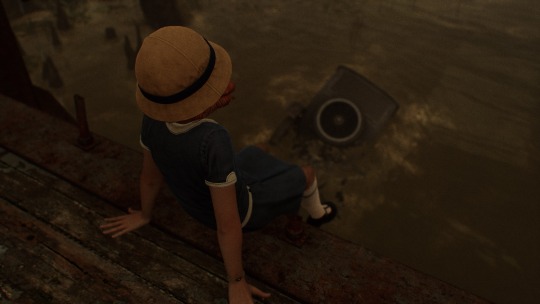

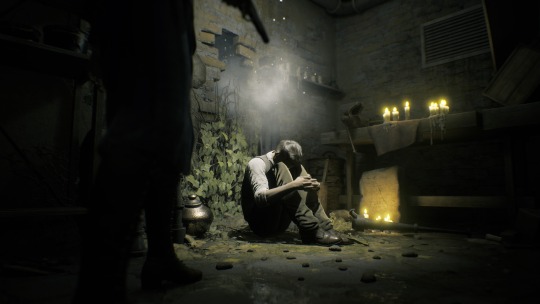
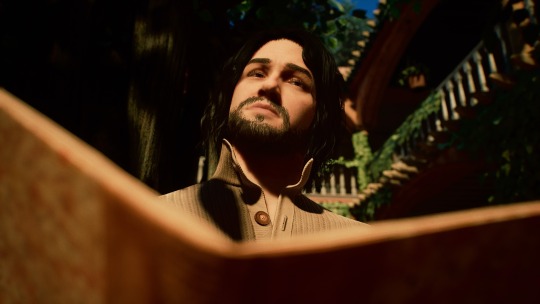
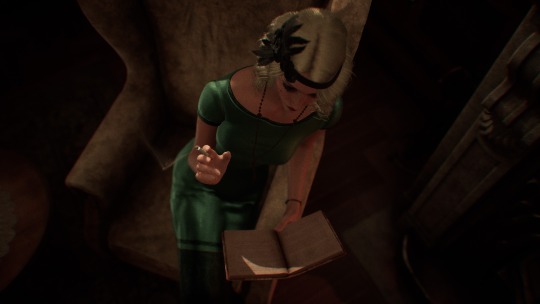
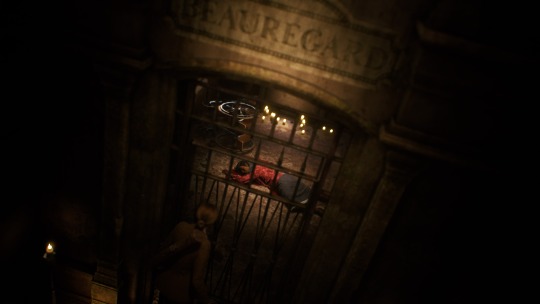

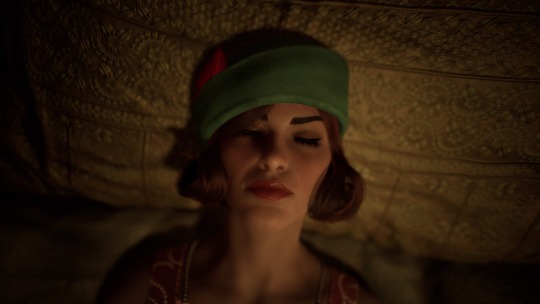
Alone In The Dark - (Most of the) Supporting Characters
4 notes
·
View notes
Text
youtube
ALONE IN THE DARK RITUALE ANDATO MALE - EDWARD VS BOSS 🌳THE END 🎮PS5 UHD 60f
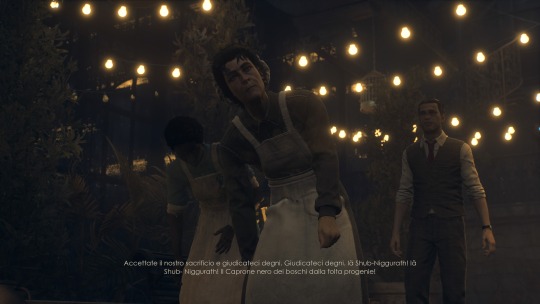

#aloneinthedark#ilrutuale#theend#derceto#capitolo5#edwardcarnby#parte13#walkthrough#gameplay#letsplay 🎮#ps5#ps5share#pcgames#xbox#youtubegaming#yuotubegamingchannel#PS5Share#ShareFactoryStudio#ALONEINTHEDARK#Alone in the Dark#LET'S_PLAY#PS5#PlayStation 5#ITA#Alone in the dark#Live#streaming#PS54k#4k uhd#gameplay ps5
0 notes